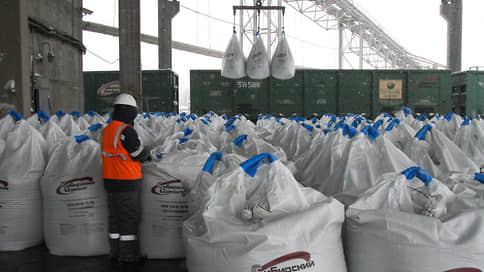Transporting cement by rail is rising in price due to tariffs and railcar shortages
[ad_1]

The increase in tariffs of JSC Russian Railways and the shortage of wagons led to an increase over the year to 23% of the cost of delivering cement by rail. The maximum dynamics are observed in the Kaliningrad region, where additional factors were the closure of the ferry line for cement supplies and the reduction of the transit quota through Lithuania. The current situation, according to market participants, may lead to another surge in product prices and problems with supplies during the peak summer period.
The cost of delivering cement by rail over the year increased by 11–23% depending on the region, Tsemros told Kommersant. The indicator increased most noticeably in the Kaliningrad region – by 23%. SMPRO managing partner Vladimir Guz says that each component of transport costs has increased by 11% or more this year, and for regions with complex logistics – by 20% or more. Soyuzcement explained that there is no shortage of cement in Russia, but there is a problem with its delivery: manufacturers are no more than 61% loaded. According to the organization’s estimates, more than 40% of cement is transported by rail.
Denis Nazarov, Director of Logistics and Procurement at Tsemros, cites as one of the factors for increasing costs the increase from December 2023 by 10.75% in the tariffs of Russian Railways JSC for the transportation of loaded and empty cars. The state-owned company explained to Kommersant that the cost of transportation is largely formed from the rental of a freight car, terminal handling, and delivery by road, the cost of which is not regulated by the state. In January 2024, according to Russian Railways, cement loading increased by 1.2%, to 1.1 million tons, while other construction cargo decreased by 21.3%.
Mr. Nazarov adds to this an increase in the turnaround time of wagons and the cost of their provision. “This happened due to a significant increase in the cost of servicing leasing payments due to an increase in the key rate and an increase in prices for new cars by 30–40%,” he lists.
According to estimates by the General Director of Infoline-Analytics, Mikhail Burmistrov, in December 2023, the rental of a cement hopper truck increased by 41% year-on-year, to 2.05 thousand rubles. per day, which is associated with their deficiency. In total, there are 23.9 thousand such cars in Russia, of which on average 23.1 thousand units were used in 2023. The expert considers the purchase of a new fleet unprofitable: the cost of a car is 6.5–7 million rubles, which is impossible to recoup. Soyuzcement executive director Daria Martynkina also speaks about the lack of locomotives and crews, and the untimely acceptance of cars. The transition to road transportation, according to Mikhail Burmistrov, will not be a solution for manufacturers: their cost is growing faster than rail transportation.
The market in the Kaliningrad region, according to a representative of Cemros, is also affected by the increase in transit rates for the transportation of cement through Lithuania. The quota for the supply of cement in transit through this country for 2024 has been reduced by 11.1%, to 212.4 thousand tons, Tsemros adds. Due to preventive maintenance of the Ambal and Baltiysk railway ferries, there will be no cement transportation on the Ust-Luga-Baltiysk line in the first quarter. In addition to transit through Lithuania, products, as they say at Tsemros, are transported through the port of St. Petersburg. It is now impossible to deliver cement by car to Kaliningrad, SMPRO clarifies.
Denis Nazarov explained that the company will be able to meet the needs of the construction sector of the Kaliningrad region “with proper organization on the part of consumers.” At the same time, the company does not rule out that seasonal fluctuations in demand and uneven receipt of orders for shipment may lead to interruptions in supplies to the region in the summer, which will also affect prices. According to Vladimir Guz’s forecasts, for regions with complex logistics, cement prices may rise by 10–15% in 2024, and for other parts of the country – by an average of 3–5%.
President of the Osnova Group of Companies Alexander Ruchyev notes that in recent years all construction materials and components have been rising in price: cement has risen in price by an average of 14–15% over the past year. According to him, in the Volga region, the North Caucasus and the Far East, the dynamics were more pronounced. Mr. Ruchev assumes that the situation will repeat this year.
[ad_2]
Source link





